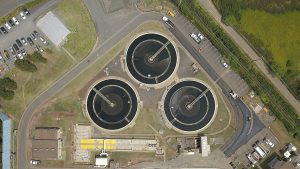So when I first dipped my toe into blogging on microBEnet (which I had just set up) on Feb 16, 2011 I had no idea that *nine* years later, I’d be furiously blogging about a global pandemic (and still in the Eisen lab). Since this is my *500th blog post* I just thought I’d reflect …
This is arguably getting a bit outside the built environment mandate and more into epidemiology and disease transmission, but I thought this was an interesting paper detailing a particular outbreak in a meat processing facility. “Investigation of a superspreading event preceding the largest meat processing plant-related SARS-Coronavirus 2 outbreak in Germany“. What I particularly like …
A review article this time, “An Overview on the Role of Relative Humidity in Airborne Transmission of SARS-CoV-2 in Indoor Environments“. It’s pretty much all there in the title… they looked at the state of current research and tried to summarize it here, specifically with an eye towards actionable choices for people managing buildings. Abstract …
A short article here from our prolific collaborators at the University of Oregon, “Severe Acute Respiratory Syndrome Coronavirus 2 (SARS-CoV-2) Environmental Contamination and Childbirth”. Basically they are looking here at the risk of the spreading of the virus during childbirth… and show that an asymptomatic carrier results in environmental contamination. No Abstract since it’s a …
I expect to see more and more of this kind of article moving forward. Moving from “here’s the virus in buildings” to “here’s an approach for dealing with it. In this article, “Intermittent occupancy combined with ventilation: An efficient strategy for the reduction of airborne transmission indoors” the authors look at the combination of ventilation …
I missed blogging about this important preprint when it came out for some reason. “Viable SARS-CoV-2 in the air of a hospital room with COVID-19 patients“. I’ve talked in the past about how many of the environmental sampling studies come out are only looking at SARS-CoV-2 RNA and not viable virus. Here’s a nice …
Another article showing the value of wastewater surveillance for SARS-CoV-2. This group took weekly samples through the early days of the pandemic and on into the more recent stages and show how well that correlates with what’s known about outbreaks in the catchment area over that time. They again highlight the value of this …
Another chapter in the Diamond Princess story… you can read our last couple of journal club blog posts about the ship here and here. The latest article “Mechanistic Transmission Modeling of COVID-19 on the Diamond Princess Cruise Ship Demonstrates the Importance of Aerosol Transmission” expands this story by modeling the possible routes of transmission of …
So this one is from back in June, I had been meaning to check it out but was just reminded today on Twitter by Bastien Chevreux. “SARS-CoV-2 in environmental samples of quarantined households” is a fairly straightforward application of environmental surveillance to a household. Virtually every other monitoring study I’ve seen (wastewater aside) has been …
So we’ve written a lot about wastewater monitoring as a tool for community-level surveillance for SARS-CoV-2. I thought this article was a nice twist on that… looking at airplanes and cruise ships as a way to better monitor the virus in a travel setting. Abstract below: Abstract Background Wastewater-based epidemiology (WBE) for the severe acute …






